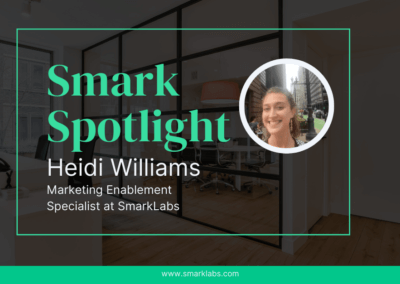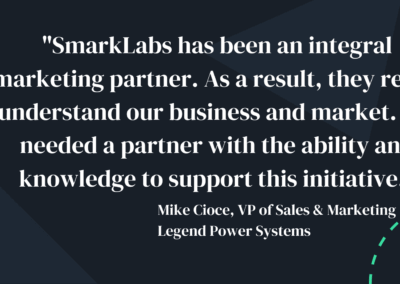Through an integrated market research campaign, CodeScience connected with targeted prospects, delivered value and improved its positioning as a thought leader in leveraging the AppExchange.
The Challenge
CodeScience had marketing resources and budget to allocate for an initiative that would help the company to connect with key prospects while emphasizing and further establishing its positioning as a leading developer of Salesforce AppExchange products. SmarkLabs pitched a number of ideas for integrated, full-funnel campaigns. After review and a collaborative call, CodeScience and SmarkLabs decided to leverage a market research strategy to accomplish these goals.
The Process
By laying the right groundwork, this campaign fueled content and drove strategy for months to come. Here’s the framework for the campaign, piece by piece:
- Identify your persona and research targets. CodeScience uses an account-based marketing approach, emphasizing ideal-fit companies to work with, so we looked to target this demographic in the research: loosely, mid-size to large technology companies with at least one product on the AppExchange.
- Define your offer. We wanted to create content that would be valuable to both companies who have developed on the AppExchange before and those who have not, but might benefit from doing so. The sweet spot: A report on strategies for driving adoption and revenue through the AppExchange, with research on what works best.
- Determine your questions. What do you want to ask, why is that information valuable and how? We brought together key stakeholders to break findings into sections and reach consensus on the most valuable learnings, drafted a series of questions, and brought in a data expert to make changes geared toward extrapolating insights from collected data.
- Build your survey. There are several tools to do this; we used SurveyMonkey for ease of creation. The survey had an immediate question to disqualify any respondent not yet on the AppExchange, and required a work email to confirm respondents fit.
- Build your outreach and strategy. We compiled a targeted list based on account priorities, data on whether a company has an AppExchange presence. We also drafted a series of emails to go to this list until they completed the survey, scheduling six touches over the course of three weeks. An escalating incentive to solicit responses, which doubled if there was no response after the first touches, was also budgeted for and implemented.
- Collect and process the data. In the weeks the survey was live, we collected about 140 qualified responses from targeted respondents. Due to the highly defined nature of the group, responses were solicited through targeted, private emails only. The data expert helped shape responses into clear insights and takeaways.
- Create the report. We grouped and wrote through our key findings, publishing a PDF report within a month of completing response gathering and closing the survey. The report’s original iteration was downloadable behind a form on an optimized landing page.
- Tell the world. Our promotion strategy ran deep. The launch of the report coincided with Dreamforce ‘17, Salesforce’s (and the AppExchange’s) signature event. Leveraging a mix of direct sales outreach, sales development, and promotional marketing emails, we used the report as a foot in the door to generate meetings — with the angle that we just published research about how to succeed in the ecosystem, and would love to share the findings with them first. Other pieces included social-media and email-signature promotion, press release, a five-piece blog series breaking down the insights, a semi-custom direct mail play and social targeting to priority accounts, and a digitally optimized, interactive version of the report.
The Results
The market research campaign significantly impacted CodeScience’s marketing and sales outcomes, as well as the company itself. Here are some measures of success — some based on KPIs, others less numerical but still significant.
Quantitative
- 140 qualified responses (and Amazon gift cards sent in appreciation)
- 100+ form submissions to download the report
- 5 additional meetings booked at DF ‘17 to discuss the report
- 1000+ digital views of content (blog series, landing page, PDF and interactive report)
Qualitative
- Improved market positioning and boosted awareness
- Provided topic for DF ‘17 hosted panel and a reason for sales to helpfully reach out to prospects
- Launched a related podcast on the strength of findings and connections




